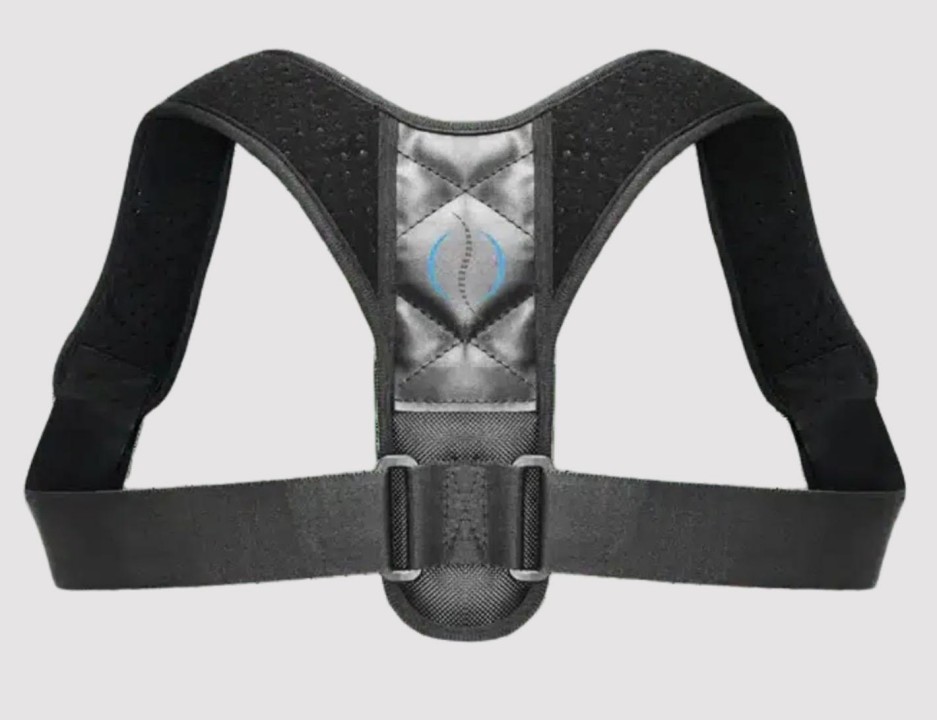

PTSD and Its Impact on Mental Health
Defining Post-Traumatic Stress Disorder
Post-Traumatic Stress Disorder (PTSD) is a mental health condition that can develop after someone experiences or witnesses a traumatic event. These events might include combat, natural disasters, accidents, or personal assaults. PTSD isn’t just about remembering the event—it’s about how the brain and body respond to it long after it’s over. For many, the trauma rewires how they perceive safety, trust, and even their own emotions.
Common Symptoms of PTSD
PTSD symptoms can vary widely, but they generally fall into four main categories:
- Intrusive memories: These can include flashbacks, nightmares, or unwanted thoughts that bring the traumatic event back vividly.
- Avoidance behaviors: People might avoid places, conversations, or even thoughts that remind them of the trauma.
- Negative changes in mood or thinking: This could mean feelings of hopelessness, difficulty remembering aspects of the event, or an overall sense of detachment from others.
- Heightened arousal or reactivity: Symptoms like irritability, being easily startled, or having trouble sleeping are common.
These symptoms can lead to considerable distress, affecting daily routines and relationships.
The Psychological and Physical Effects of PTSD
The impact of PTSD goes beyond emotional struggles. Psychologically, individuals may grapple with trust, intimacy, and communication challenges, which can strain relationships and make social interactions difficult. These difficulties often affect how survivors connect with others and solve problems in everyday life.
Physically, PTSD can manifest as chronic stress, headaches, or digestive issues. Over time, the body’s constant “fight or flight” response can even contribute to long-term health problems like heart disease or high blood pressure. Understanding these effects is key to addressing the full scope of PTSD’s impact on mental health.
The Role of Trauma Therapy in PTSD Recovery
How Trauma Therapy Addresses PTSD Symptoms
Trauma therapy is a focused approach to help individuals manage and reduce the distressing effects of PTSD. It provides a structured way to process traumatic memories, which can often feel overwhelming or impossible to face alone. By addressing the root causes of PTSD, therapy can significantly reduce symptoms like flashbacks, anxiety, and depression. Techniques such as cognitive restructuring, exposure therapy, and mindfulness exercises are often used to help individuals regain control over their thoughts and emotions. Over time, this process can lead to improved daily functioning and a sense of stability.
The Importance of Early Intervention
Getting help as soon as PTSD symptoms appear is vital. Early intervention can prevent symptoms from becoming more severe or deeply ingrained. It also allows individuals to start building coping strategies sooner, which can make the recovery process smoother. Key signs to look for include persistent nightmares, avoiding certain places or situations, and feeling constantly on edge. Recognizing these symptoms early and seeking professional support can make a significant difference in recovery outcomes. Understanding the stages of PTSD recovery highlights how early action can enhance both treatment and coping strategies.
Long-Term Benefits of Trauma Therapy
The impact of trauma therapy often extends far beyond symptom relief. It can help individuals build resilience, improve relationships, and develop a stronger sense of self-worth. Over time, therapy fosters personal growth by teaching skills that can be applied to future challenges. Additionally, the tools learned during therapy can help prevent relapses and support long-term mental well-being. For many, the journey through trauma therapy becomes a foundation for a healthier, more fulfilling life.
Types of Trauma Therapy for PTSD
Cognitive Behavioral Therapy for Trauma
Cognitive Behavioral Therapy (CBT) is one of the most widely used approaches for treating PTSD. It focuses on identifying and changing negative thought patterns that contribute to distress. Therapists often use techniques like cognitive restructuring to help patients challenge harmful beliefs and replace them with healthier ones. CBT has been shown to significantly reduce PTSD symptoms, making it a cornerstone in trauma-focused care. Sessions may also include gradual exposure to traumatic memories in a controlled setting, which helps desensitize individuals to triggers over time.
Eye Movement Desensitization and Reprocessing (EMDR)
EMDR is a specialized therapy that uses guided eye movements to help reprocess traumatic memories. The idea is that moving the eyes in a specific pattern while recalling distressing events can reduce their emotional impact. This method is particularly effective for those who struggle to talk about their trauma because it doesn’t rely heavily on verbal expression. Many individuals report feeling a sense of relief and closure after completing EMDR sessions, as it helps “unstick” memories that feel frozen in time.
Somatic Experiencing and Its Benefits
Somatic Experiencing focuses on the physical sensations associated with trauma. The therapy aims to release tension stored in the body, which often manifests as chronic pain or other physical symptoms. By paying attention to bodily sensations and learning to regulate them, individuals can achieve a sense of safety and grounding. This approach is especially helpful for those whose trauma has left them feeling disconnected from their own bodies. Techniques may include breathing exercises, gentle movement, and mindfulness practices. For individuals interested in creative methods, expressive arts therapy can complement somatic work by offering a way to process emotions through art, music, or movement.
The Science Behind Trauma Therapy
How Trauma Affects the Brain
Trauma significantly alters how the brain operates, particularly in areas responsible for emotional processing, memory, and the perception of threats. For example, the amygdala, often called the brain’s alarm system, becomes hyperactive in individuals with PTSD. At the same time, the prefrontal cortex, which helps regulate emotions, may become less active. This imbalance can lead to a heightened sense of fear and difficulty distinguishing between real and perceived threats. Trauma significantly changes brain function, which explains why many people with PTSD experience persistent distress and fear long after the traumatic event has passed.
Neuroplasticity and PTSD Recovery
The brain’s ability to adapt, known as neuroplasticity, plays a vital role in recovering from trauma. While trauma can create negative patterns in the brain, therapy helps to “rewire” these pathways. Techniques like Cognitive Behavioral Therapy (CBT) and Eye Movement Desensitization and Reprocessing (EMDR) encourage the brain to form new, healthier connections. This process not only reduces symptoms but also helps individuals regain a sense of control over their thoughts and emotions. Understanding the brain’s capacity for change is key to effective PTSD treatment.
The Role of Stress Hormones in Trauma
Trauma impacts the body’s stress response, often leading to an overproduction of hormones like cortisol and adrenaline. While these hormones are essential for survival, their prolonged elevation can harm both the brain and body. For instance, chronic stress can shrink the hippocampus, the area of the brain responsible for memory and learning. Trauma therapy aims to regulate this hormonal imbalance, helping individuals manage their stress more effectively over time. By reducing the body’s “fight or flight” response, therapy creates a calmer internal environment, making recovery possible.
Choosing the Right Trauma Therapist
Qualities to Look for in a Trauma Therapist
Choosing a therapist for trauma therapy is a personal decision, but there are key qualities that can guide the selection process. Experience in trauma-focused therapies like Cognitive Behavioral Therapy (CBT) or Eye Movement Desensitization and Reprocessing (EMDR) is often a priority. A therapist who specializes in trauma will understand the unique challenges faced by individuals with PTSD. Additionally, empathy, patience, and strong communication skills are essential traits. Feeling comfortable and safe during sessions is just as important as their professional qualifications.
Questions to Ask During the Initial Consultation
The first consultation is an opportunity to evaluate if the therapist is the right fit. Here are some questions to consider asking:
- What is your experience in treating PTSD and trauma-related conditions?
- Which trauma therapies do you specialize in, and how do they work?
- How do you approach building trust and creating a safe environment for your clients?
The answers to these questions can provide insight into their methods and whether their approach aligns with your needs. Don’t hesitate to ask about logistics like session length, fees, and availability as well.
The Importance of Therapist-Patient Compatibility
Therapist-patient compatibility can significantly impact the success of trauma therapy. Building trust takes time, but an initial sense of connection can make the process smoother. Compatibility goes beyond shared interests; it’s about feeling understood and respected. If the relationship doesn’t feel right after a few sessions, it’s okay to explore other options. Finding the right therapist is a step toward calming the nervous system and integrating traumatic memories, which are key goals of trauma therapies.
The Process of Trauma Therapy
What to Expect in Your First Session
Starting trauma therapy can feel overwhelming, but the first session is usually about building trust and understanding your needs. The therapist will likely ask about your history, symptoms, and goals for recovery. This initial meeting sets the foundation for a tailored treatment plan. It’s also a chance to ask questions and see if the therapist feels like the right fit for you. Don’t worry about diving into deep issues right away; the focus is on creating a safe space.
Setting Goals for PTSD Recovery
Recovery goals in trauma therapy often revolve around reducing symptoms, improving daily functioning, and processing traumatic memories. These goals are typically set collaboratively between the therapist and the patient. They might include:
- Learning to manage triggers and emotional responses.
- Reclaiming a sense of normalcy in daily life.
- Building coping strategies for ongoing challenges.
Goals may evolve over time, reflecting progress or new insights gained during the therapy process.
The Stages of Trauma Therapy
Trauma therapy usually unfolds in stages, each designed to address different aspects of recovery. While every individual’s journey is unique, these are the common phases:
- Stabilization: This stage focuses on creating a sense of safety and teaching skills to handle distress, such as grounding techniques or mindfulness.
- Processing the Trauma: Here, individuals work through traumatic memories, often using methods like an evidence-based therapy for PTSD to confront and process these experiences.
- Reintegration: The final stage involves applying what’s been learned to daily life, fostering resilience, and moving forward with greater emotional stability.
Trauma therapy, also known as trauma-focused therapy, is a journey that requires patience and commitment. Each step, from the first session to the final stage, plays a critical role in helping individuals regain control over their lives.
Challenges in Trauma Therapy and How to Overcome Them
Dealing with Emotional Triggers During Therapy
One of the toughest parts of trauma therapy is managing emotional triggers. When discussing past events, emotions like fear, anger, or sadness can resurface unexpectedly. This can make therapy feel overwhelming at times. Therapists often use grounding techniques, like focusing on the present moment, to help clients regain control. Breathing exercises and mindfulness practices are also common tools for managing these intense feelings. For example, effective therapies for trauma and PTSD often incorporate mindfulness to help clients stay anchored during sessions.
Overcoming Resistance to Treatment
Resistance is another hurdle many face in trauma therapy. It’s not uncommon for individuals to feel hesitant about opening up or even skeptical about whether therapy can help. This resistance can stem from fear of reliving painful memories or a lack of trust in the process. Therapists work to build a safe and supportive environment, which helps clients feel more comfortable over time. Techniques like motivational interviewing can also encourage individuals to engage more fully in their treatment. Tailored approaches, such as effective treatments for PTSD, can make a significant difference in addressing these barriers.
Building Resilience Through Therapy
Building resilience is a long-term goal but can feel like an uphill battle, especially in the early stages of therapy. Resilience isn’t just about “bouncing back”—it’s about developing the tools to manage stress and adapt to challenges. Therapists often focus on helping clients identify their strengths and build coping strategies. Some common methods include:
- Practicing self-compassion to counter feelings of guilt or shame.
- Setting small, achievable goals to create a sense of progress.
- Engaging in activities that promote emotional well-being, like journaling or creative arts.
Over time, these steps help individuals feel more empowered to navigate life’s challenges, making the therapy process more rewarding.
The Role of Support Systems in PTSD Recovery
How Family and Friends Can Help
When someone is dealing with PTSD, the support of family and friends can make a world of difference. Loved ones play a critical role in creating a safe and understanding environment where the individual feels heard and accepted. Simple actions, like being patient and listening without judgment, can go a long way. Offering to help with daily tasks or just being present during tough moments also provides a sense of stability. It’s important for family members and friends to educate themselves about PTSD so they can better understand what their loved one is going through.
The Importance of Support Groups
Support groups are another vital resource for individuals recovering from PTSD. These groups provide a space where people can share their experiences and connect with others who truly understand what they’re going through. For instance, peer support is crucial for individuals with PTSD, as it fosters acceptance and alleviates feelings of isolation. In these groups, participants often find comfort in knowing they’re not alone, which can be incredibly empowering. For returning war veterans, peer support groups are especially beneficial, helping them rebuild social connections and reduce PTSD symptoms. Joining a support group can be a stepping stone toward healing and building resilience.
Integrating Community Resources into Recovery
Community resources can also play a significant role in PTSD recovery. Local organizations, mental health centers, and even online platforms often offer programs tailored to individuals coping with trauma. These might include counseling services, workshops, or recreational activities aimed at reducing stress. Utilizing these resources can complement trauma therapy and provide additional layers of support. It’s all about creating a network of care that surrounds the individual with the tools they need to recover. Communities that prioritize mental health awareness make it easier for people to seek help without fear of judgment or stigma.
Self-Care Practices to Complement Trauma Therapy
Mindfulness Techniques for PTSD
Mindfulness is one of the most effective ways to manage PTSD symptoms. It encourages individuals to focus on the present moment, helping to reduce feelings of anxiety and distress. Simple practices like deep breathing, body scans, or guided meditations can make a big difference. For instance, spending just 10 minutes a day practicing mindfulness can help calm the mind and create a sense of control. Consistency is key—making mindfulness a daily habit can amplify its benefits over time.
The Role of Physical Activity in Recovery
Engaging in regular physical activity can improve mental health and support PTSD recovery. Exercise doesn’t have to mean running marathons or lifting heavy weights. Activities like yoga, walking, or even dancing can be beneficial. These movements not only release endorphins but also help individuals reconnect with their bodies. In fact, techniques such as myofascial release have been shown to aid in releasing trapped emotions and tension. Finding an activity that feels enjoyable and sustainable is crucial for long-term success.
The Importance of Nutrition and Sleep
Good nutrition and quality sleep are often overlooked but are vital for emotional and physical well-being. Eating a balanced diet rich in whole foods, lean proteins, and healthy fats can stabilize mood and energy levels. Similarly, establishing a consistent sleep routine can significantly improve PTSD symptoms. If sleep is a challenge, creating a calming bedtime ritual—like turning off screens an hour before bed or sipping herbal tea—can help. It’s also helpful to consult a trauma expert for personalized strategies, as healing is a gradual process (managing PTSD).
Measuring Progress in PTSD Recovery
Recognizing Signs of Improvement
Understanding progress in PTSD recovery can be tricky because it often varies from person to person. However, there are some common indicators that therapy is working. For instance, individuals might experience fewer intrusive thoughts or nightmares. They may also notice a reduction in avoidance behaviors, like being able to visit places or engage in activities they previously avoided. Emotional regulation also tends to improve, with fewer outbursts or overwhelming feelings. Improvement isn’t always linear, but recognizing these small changes can provide reassurance that recovery is happening.
The Role of Feedback in Therapy
Feedback plays a big role in measuring progress. Therapists often ask patients to share their thoughts on how therapy is going and whether they feel the sessions are helping. This kind of open communication helps in adjusting the treatment plan if needed. Self-assessment tools, like mood trackers or symptom checklists, can also be helpful. These tools give both the therapist and the individual a clearer picture of what’s working and what might need tweaking. Honest feedback is key to making therapy as effective as possible.
Adjusting Treatment Plans as Needed
No two PTSD recovery journeys are the same, which is why flexibility in treatment is so important. Sometimes, a specific therapy approach might stop being effective, or new challenges might arise that require a shift in focus. Regular evaluations help ensure the treatment plan stays aligned with the individual’s needs. This might mean incorporating new techniques, like mindfulness exercises, or revisiting earlier strategies that worked well. Adjustments aren’t setbacks—they’re part of tailoring the recovery process to best support the individual.
Addressing Stigma Around PTSD and Trauma Therapy
Breaking Down Misconceptions About PTSD
PTSD is often misunderstood, leading to widespread misconceptions. Some people wrongly believe it only affects veterans or those who have experienced extreme violence. In reality, PTSD can arise from various traumatic events, such as accidents, natural disasters, or personal losses. Educating the public about the diverse causes and symptoms of PTSD is a key step toward reducing stigma.
To break these misconceptions:
- Share real-life stories of individuals from different backgrounds who live with PTSD.
- Promote accurate information through social campaigns and educational programs.
- Encourage media outlets to portray PTSD in a realistic and compassionate manner.
Encouraging Open Conversations About Mental Health
Talking about mental health openly can feel intimidating, but it’s one of the most effective ways to challenge stigma. People often avoid these discussions out of fear of being judged or misunderstood. By normalizing these conversations, individuals can feel more comfortable seeking help and sharing their experiences.
Here are a few ways to start:
- Use “I” statements to express personal feelings and experiences, fostering understanding and empathy. Overcoming mental health stigma can begin with small, honest dialogues.
- Host community events focused on mental health awareness.
- Support friends or family members by listening without judgment and validating their feelings.
The Role of Advocacy in Reducing Stigma
Advocacy plays a powerful role in shifting public attitudes about PTSD and trauma therapy. When individuals, organizations, and communities come together to speak up, they can influence policies, improve access to care, and create a more accepting society.
Advocacy efforts might include:
- Joining or supporting mental health advocacy groups.
- Participating in events like PTSD awareness walks or fundraisers.
- Sharing personal journeys to inspire others and challenge stereotypes.
By embracing therapy and promoting self-awareness, individuals can challenge the stigma surrounding mental health. Seeking help isn’t a sign of weakness; it’s a step toward transformative life changes. Embracing therapy can empower people to reclaim their lives and find strength in their recovery.

Safeguarding Patient Information: Why HIPAA-Compliant Email Matters
Healthcare is always evolving; technology is now crucial in patient care and management. Especially with PHI, secure communication is very vital. For patients, employees, and healthcare professionals alike, email is a basic tool for communication. Conventional email is rather unsafe and might compromise patient information. Any business managing PHI should send HIPAA-compliant emails as they provide the necessary security. While HIPAA compliant email offers peace of mind and safeguards patient data, most significantly it gives trust for patients. This approach emphasizes ethical responsibility, patient-centered therapy, and safeguarding of patient privacy all through their medical process.
Dealing with Non-Compliant Email Risks
Emails used in healthcare communication are like delicate messages sent to the world on postcards without encryption. As these emails pass across networks, many sites and systems might provide weaknesses. Their open communication makes them easy targets for phishing scams, hackers, and human error include forwarding data to the wrong email address. Breaches might reveal medical histories, diagnosis, treatment plans, other PHI, Such transgressions have severe consequences. Beyond the hundreds to millions of dollar penalties per breach of HIPAA, healthcare companies lose patient trust and reputation. Patients who worry about their security might not provide their personal information, therefore severing the relationship between them and their provider and reducing the quality of service. Reputational damage might seriously affect the financial situation of the company and its ability to attract fresh clients.
Important HIPAA-Compliant Email Attributes
HIPAA-compliant email solutions address several important areas of typical email security problems. They begin with end-to–end encryption. Emails so are mixed into unreadable code before leaving the sender’s device and remain that way until the recipient decodes them. This guards data against illicit access even in cases of intercepted emails. Second, multi-factor authentication and strong passwords help to restrict access to these systems. Apart from security events and encryption and access limitations, HIPAA-compliant emails can incorporate audit trails and activity logs to monitor PHI access and email use. Emails should also be kept by the system on encrypted servers meeting HIPAA data center security requirements. Usually including automated business associates agreements (BAA), these solutions help to guarantee legal compliance. These elements provide a robust security architecture shielding patient information from data leaks.
HIPAA-Compliant Email’s Benefits Beyond Compliance
Beyond just avoiding penalties, HIPAA-compliant email offers benefits that promote adoption. Patients get comfort knowing that physicians will respect their privacy. When patients trust the anonymity of their data, they are more honest with their physicians, therefore enhancing diagnosis and treatment. In delicate fields like mental health and reproductive care, where personal information is shared, this is particularly crucial. Furthermore enhancing healthcare procedures are compliant options. Audit logs, email encryption, and safe file sharing help to enhance communication security. Connectivity with existing systems and user-friendly interfaces save time and effort, therefore allowing healthcare professionals to focus on patient care. At last, HIPAA-compliant email provides physicians with peace of mind. Knowing their lines of communication helps them to defend themselves from legal and financial issues by fulfilling tight security needs and therefore preventing PHI breaches.

TrueFit Posture Corrector Reviews: Unbiased Analysis
What is TrueFit Posture Corrector?
The TrueFit Posture Corrector is like a trusty co-pilot for your spine. It’s this nifty, lightweight contraption that you strap on like a backpack. Made from some breathable, comfy material, it’s designed to gently pull your shoulders back and straighten out your spine. As a trucker who’s spent more hours than I can count hunched over a steering wheel, I can tell you this little device is a real lifesaver. It’s adjustable, so whether you’re built like a linebacker or a jockey, you can make it fit just right. And the best part? You can wear it under your clothes without looking like you’re gearing up for a space mission.How Does It Work
Now, here’s where the TrueFit Posture Corrector really shines. It’s not just about forcing you to sit up straight for a few hours. This clever gadget is all about retraining your muscles and creating what they call “muscle memory”. When you strap it on, it gently pulls your shoulders back into the right position. At first, it might feel a bit strange – like someone’s constantly tapping you on the back, reminding you to sit up straight. But that’s the beauty of it. Over time, your muscles start to remember this position, even when you’re not wearing the corrector. For us truckers, it’s a godsend. It helps counteract all that slouching we do behind the wheel, easing the strain on our necks, shoulders, and lower backs. I’ve noticed I’m breathing easier too, which keeps me more alert on those long stretches of highway.How to Use TrueFit Posture Corrector
Using the TrueFit Posture Corrector is easier than parallel parking a semi. Here’s how I do it:- I start by slipping it on like a vest or backpack. Nothing complicated there.
- Then, I reach behind and pull the straps to adjust the fit. You want it snug, but not so tight you feel like you’re in a straitjacket.
- At first, I only wore it for about 30 minutes a day. It takes some getting used to, and you don’t want to overdo it right off the bat.
- As I got more comfortable, I started wearing it for longer stretches. Now, I can keep it on for a couple of hours during my longer drives.
- The key is consistency. I make sure to use it every day, even on my off days. It’s all about building that muscle memory.
- I’ve found it works great when I combine it with some simple stretches during my rest stops. It’s like a one-two punch for better posture.
What I Like About TrueFit Posture Corrector
- Comfort is king: This thing is surprisingly comfortable, even during those long hauls. I barely notice it’s there most of the time.
- Adjustable fit: It’s easy to customize, so it fits me just right, whether I’m wearing a thin t-shirt or my bulky winter jacket.
- Discreet design: I can wear it under my clothes without looking like I’m strapped into some weird contraption.
- Noticeable results: My back pain has significantly decreased, and I’m sitting taller without even thinking about it.
- Breathable material: Even on those sweltering summer days, it doesn’t turn me into a sweaty mess.
- Durable construction: It’s held up well to daily use and the rough-and-tumble life of a trucker.
- Improved alertness: Better posture means better breathing, which keeps me more alert on the road.
What I Don’t Like About TrueFit Posture Corrector
- Initial discomfort: It took a few days to get used to wearing it. At first, it felt a bit like someone was constantly nudging my shoulders back.
- Adjustment learning curve: Getting the perfect fit took some trial and error. It wasn’t rocket science, but it wasn’t instant either.
- Not a miracle cure: It’s not a magic fix for years of bad posture. You’ve got to put in the effort and be consistent.
- Can be visible under thin shirts: If you’re wearing a really thin shirt, you might see the outline of the straps.
- Occasional readjustment needed: Sometimes during long drives, I need to readjust it a bit to keep it in the right position.
- Price point: It’s not the cheapest option out there, though I think it’s worth the investment.












